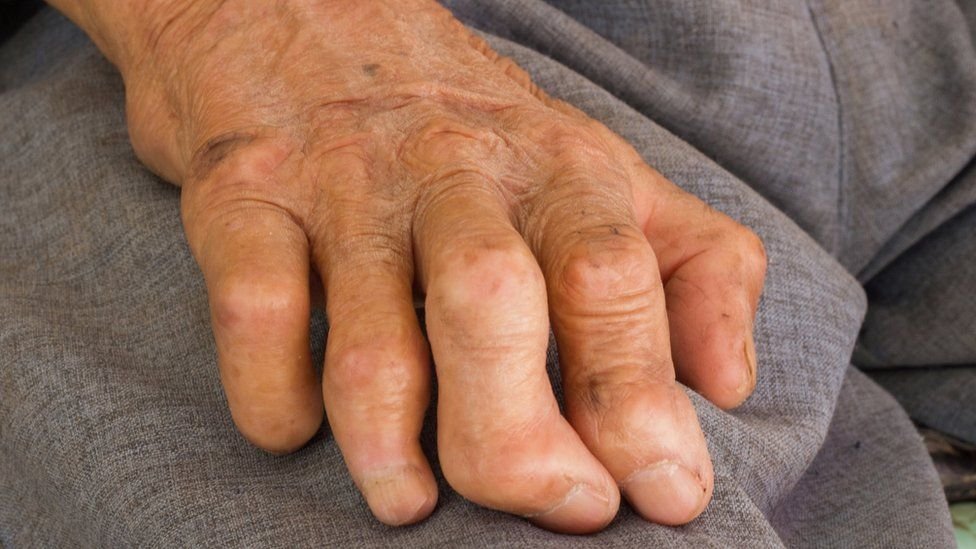Definition of Leprosy – This course is designed to understand the concept of community health nursing: nurses’ roles and interventions in family health, school health, occupational health, environmental health, elderly health care, gender issues, disaster management and principles and terminology of epidemiology. The aim of the course is to acquire knowledge and skills in community health nursing.
Definition of Leprosy:
According to WHO:
Leprosy is a chronic infectious disease caused by Mycobacterium leprae, an acid-fast, rod- shaped bacillus. The disease mainly affects the skin, the peripheral nerves, mucosa of the upper respiratory tract and also the eyes, apart from some other structures.
Or
Leprosy is a chronic, progressive bacterial infection caused by the bacterium Mycobacterium leprae. It primarily affects the nerves of the extremities, the skin, the lining of the nose, and the upper respiratory tract. Leprosy is also known as Hansen’s disease.
Or
Leprosy is a chronic granulomatous disabling disease caused by Mycobacterium leprae. It involves the peripheral nerves, skin, mucous membrane, bone and viscera. M. leprae is a Gram positive, acid fast and alcohol fast bacillus, also called Hansen’s bacillus. Man is the only reservoir of infection.
(Ref by-ABM Abdullah/Practical Manual in Clinical Medicine/1/449)

Route of Transmission:
- By droplet infection from nasal mucosa of leprosy patient. Sometimes skin content.
- (Ref by-ABM Abdullah/Practical Manual in Clinical Medicine/1/449
Pathology:
- Mycobacterium leprae has got specific predilection for certain tissues:
- Skin
- Peripheral nerves
- Nasal mucosa.
- Eyes
- Muscle
- Bone
- Testis
- Peripheral neuritis (Damage of nerve)
- Direct bacillary infiltration of the organs
- Leprae reaction (Immunological reaction).
Incubation period:
- An average of about three to five years.
Source of infection:
- Secretions per nose of leprosy patients through sneezing and blowing. Ulcerated or broken skin of bacteriological positive cause of leprosy.
Predisposing factors:
- At highest risk are those living in endemic areas with poor Living conditions such as inadequate bedding, contaminated water and insufficient diet, or other diseases (such as HIV) that compromise immune function.
- Children are more susceptible than adults.
- Occasionally, contaminated surgical tools can be a source of leprosy.
Types of Leprosy:
- The World Health Organization Classified leprosy as-
- Paucibacillary. -Few organisms in tissue. Skin smear for M. leprae bacilli is negative or few. (found in TT and BT)
- Multibacillary- Large number of organisms in tissue. Skin smear for M. leprae bacilli is positive (found in BT, all BB, BL & LL)
- The Ridley-Jopling scale provides five gradations.
- Tuberculoid Leprosy (“TT”),
- Borderline Tuberculoid (“BT”)
- Mid-borderline Or Borderline leprosy (“BB”)
- Borderline Lepromatous (“BL”), and
- Lepromatous Leprosy (“LL”).
- Leprosy may also be divided into:
- Early and indeterminate leprosy
- Tuberculoid leprosy
- Borderline tuberculoid leprosy
- Borderline leprosy
- Borderline lepromatous leprosy
- Lepromatous leprosy
- Histoid leprosy
- Diffuse leprosy of Lucio and Latapi

R EQ (Description of Each Leprosy Types):
| Intermediate leprosy | It is the earliest stage of leprosy. In this stage, patients suffer from flat lesions which may heal by themselves without progressing in case of strong immunity. |
| Tuberculoid leprosy | It is the mild and less serious type of leprosy. People suffering from this disease have some patches of flat and pale-colored skin and have no sensation on the affected area because of nerve damage. This is less infectious than other forms. This infection heals on its own, or it can persist and progress to a more severe form. |
| Borderline tuberculoid leprosy | The symptoms at this stage are quite similar to the tuberculoid but the infections may be quite smaller and more in number which may continue and revert to tuberculoid, or to any other advanced form. |
| Mid-borderline leprosy | The sign and symptoms of this stage are quite similar to the Borderline tuberculoid leprosy. This includes reddish plaques with numbness which may regress or progress to another form. |
| Borderline leprosy | This type of leprosy is a cutaneous skin condition and the main symptoms include multiple wounds or scars including plaques, flat, raised bumps that may continue or regress. |
| Lepromatous leprosy | It is considered as a more severe type of disease with many lesions with bacteria. The affected region is full of bumps, numbness, muscle weakness and rashes. Other symptoms include limb weakness, hair loss and other body parts such as kidneys, nose and male reproductive organs are also affected. It is more infectious than tuberculoid leprosy which never regresses. |

Complications of Leprosy:
- Blindness.
- Kidney failure.
- Muscle weakness.
- Disfiguration of the face.
- Infertility and Erectile dysfunction in men.
- Permanent damage to the nerves within the brain.
- Permanent damage to the nose from the inside resulting in nose bleeding.
Clinical Features of Leprosy:
- Damage to the skin and peripheral nervous system: Skin lesions and deformities, most often affecting the cooler places on the body (Eyes, nose, earlobes, hands, feet, and testicles)
- Skin lesions are lighter than normal skin color.
- The skin lesions and deformities can be very disfiguring.
- Lesions have decreased sensation to touch, heat, or pain and do not heal after several weeks
to months.
- Thickened peripheral verves: Ulnar nerve behind the medial epicondyle of humerus can be palpated as a cord like structure.
- Muscle weakness.
Treatment of Leprosy:
The WHO recommends two standard treatment regiments
- Multi-bacillary leprosy: It includes both lepromatous and border line leprosy. three drugs are used
- a) Rifampicin – 600 mg, once monthly, given under supervision.
- b) Dapsone-100 mg daily self-administered.
anit awab
- c) Clofazimine – 300 mg once monthly, supervened and 50 mg daily self- administered.
- Duration of treatment: The end point of combined treatment should be for at least 2 years and continued, where possible up to smear negativity.
- Paucibacillary leprosy: It includes tuberculoid and indeterminate forms of leprosy.
- a) Rifampicin – 600 mg once a month for 6 months.
- b) Dapsone 100 mg daily for 6 months.

vention and Control of Leprosy:
- a) Medical measures:
- Estimation of the problem
- Early case detection
- Multidrug therapy
- Surveillance
- Immuno-prophylaxis
- Chemoprophylaxis
- Others protection of people at risk improvement of socio economic conditions.
- Rehabilitation
- Health education
- Isolation
- Disinfection
- Leprosy vaccine
- b) Social measure:
The economic and social problems of the patient and his family should be identified and met this may include social assistance and social support. This may take various forms depending upon the local situation, eg.
- Assistance to the patient to travel to and from the clinic,
- Help to the needy families in terms of food grains, clothes, care of children and their education, etc.
- c) Programmed management:
- It is long term activity so planning and promgramme management is essential ingredients.
- d) Evaluation:
- Proper evaluation of health programme is necessary to check whether the desired results are being achieved and whether any programme modifications are needed.
Properties of Mycobacterium Leprae:
- Aerobic, acid-fast.
- Do not grow in the laboratory, either on artificial media or in the cell culture.
- It can be grown in mouse footpad or in the armadillo.
- It grows very slowly with a doubling time of 14 days. (It is the slowest-growing human
bacterial pathogen)
- Facultative intracellular.
Differences Between Tuberculoid & Lepromatous Leprosy:
| Feature | Tuberculoid Leprosy | Lepromatous Leprosy |
| Type of lesion | 1 or few lesions with little tissue destruction. | Many lesions with marked tissue destruction. |
| Number of acid-fast bacilli | Few. | Many. |
| Likelihood of transmitting leprosy | Low. | High. |
| Cell-mediated response to M. leprae | Present, | Reduced or absent. |
| Lepromin skin test | Positive. | Negative. |
Read more:
